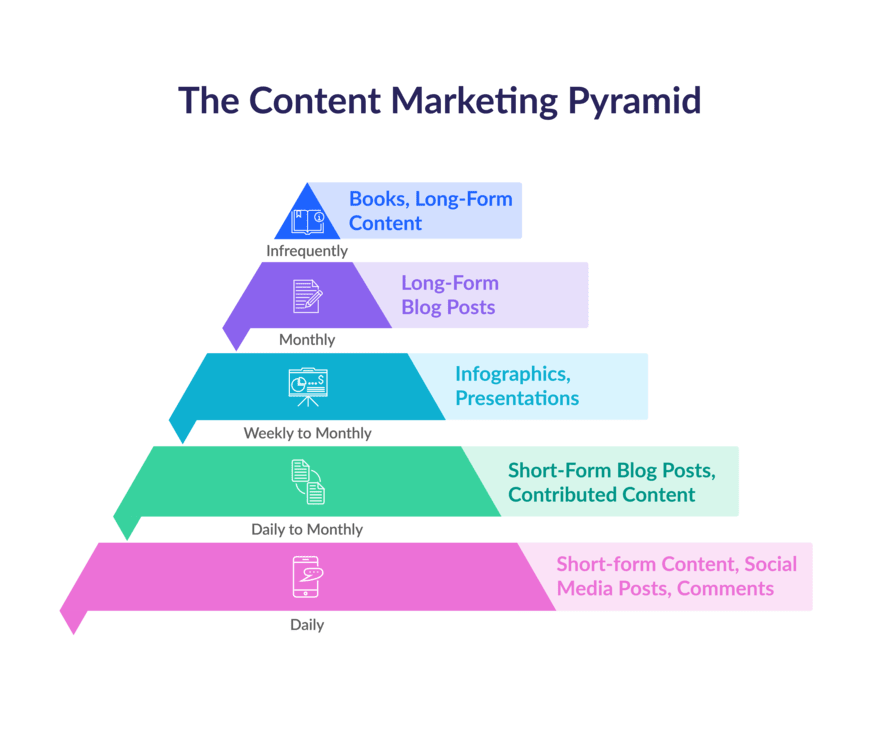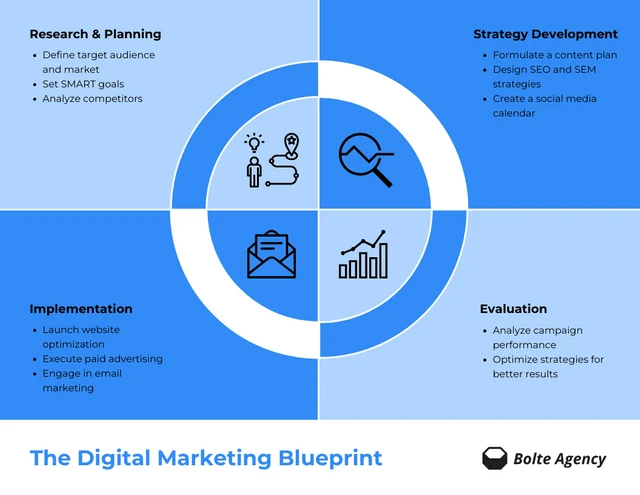Discover the secret blueprint to setting and achieving your content marketing goals like a pro. Take your strategy to new heights!

Image courtesy of via DALL-E 3
Table of Contents
Introduction to Content Marketing Goals
Content marketing is a strategy that involves creating articles, videos, and social media posts to grab people’s attention online. It’s like telling a story or sharing cool stuff with others. Setting goals in content marketing is like creating a roadmap to help you know where you’re going and how to get there.
What is Content Marketing?
Content marketing is all about sharing interesting stuff with people on the internet. Whether it’s writing a blog post, making a video, or posting on social media, the goal is to attract and entertain your audience. It’s like being a digital storyteller, keeping your readers engaged and coming back for more.
Why Goals are Important
Goals in content marketing help you figure out what you want to achieve. Whether it’s reaching more readers, selling more products, or getting people to share your content, having clear goals gives you direction and helps you measure your success. It’s like having a treasure map to guide you on your adventure.
Understanding Your Audience
Your audience is the group of people you want to read your content. It could be kids, teens, or adults with different interests. Knowing who your audience is helps you create content that they will enjoy and find valuable.
What Do They Like?
To figure out what your audience likes, pay attention to their comments, shares, and what they talk about online. Their feedback can give you insights into their preferences and help you tailor your content to meet their needs. By understanding what they like, you can create content that resonates with them and keeps them coming back for more.
Setting SMART Goals
In order to be successful in content marketing, it’s essential to set goals that are clear, specific, and achievable. One helpful way to ensure your goals are on the right track is to follow the SMART criteria. Let’s break down what SMART goals are and why they are important for your content marketing strategy.

Image courtesy of www.linkedin.com via Google Images
What are SMART Goals?
SMART goals are Specific, Measurable, Achievable, Relevant, and Time-bound. Let’s look at each of these components:
- Specific: This means being clear and precise about what you want to achieve. Instead of saying, “I want more readers,” a specific goal would be, “I want to increase my blog readership by 20%.”
- Measurable: Your goal should be quantifiable so you can track your progress. For example, “I want to gain 100 new followers on social media.”
- Achievable: Make sure your goal is realistic and within reach. Setting an unrealistic goal will only lead to frustration. Start with smaller achievable goals and work your way up.
- Relevant: Your goal should align with your overall content marketing strategy and business objectives. It should be something that will actually benefit your brand.
- Time-bound: Set a deadline for when you want to achieve your goal. This helps create a sense of urgency and keeps you focused.
Examples of SMART Goals
Here are a few examples of SMART goals that you might set for your content marketing efforts:
- Write and publish 10 blog posts in the next month.
- Increase website traffic by 25% in the next quarter.
- Get 100 new email subscribers by the end of the year.
By setting SMART goals, you give yourself a roadmap to success in content marketing. You know exactly what you’re working towards, how you’ll measure progress, and when you aim to accomplish it. This clarity and focus will help you stay motivated and on track to achieve your goals.
Planning Your Content
When it comes to content marketing, planning your content is key to achieving your goals. By organizing your ideas and scheduling your posts in advance, you can stay on track and keep your audience engaged. Let’s dive into how you can effectively plan your content to make your marketing efforts successful.
Creating a Content Calendar
A content calendar is like a roadmap for your content strategy. It helps you plan when to post new content, what topics to cover, and which platforms to use. Think of it as a fun way to organize your ideas and ensure consistency in your posting schedule. By having a visual timeline of your content plan, you can stay organized and avoid last-minute rushes to create new posts.
Types of Content to Create
When planning your content, consider the different types of content you can create to keep your audience engaged. This could include writing blog posts, creating videos, or sharing social media posts. It’s important to offer a variety of content to cater to different preferences and interests. By mixing up your content types, you can appeal to a wider audience and keep them coming back for more.
Creating Engaging Content
When creating content for your audience, it’s essential to make it engaging and interesting so that readers keep coming back for more. Here are some tips on how to make your content stand out:

Image courtesy of www.websitebuilderexpert.com via Google Images
Using Stories and Visuals
One way to make your content more exciting is by using stories to capture your readers’ attention. Stories can make the information you share more relatable and memorable. Additionally, incorporating visuals like pictures or videos can enhance your content and make it more visually appealing. Remember, a picture is worth a thousand words!
Interactive Content
Another great way to engage your audience is by adding interactive elements to your content. This could include quizzes, polls, or games that encourage readers to participate and interact with your material. By making your content interactive, you make it more fun and engaging for your audience, leading to increased interest and retention.
Promoting Your Content
Do you want more people to see the awesome content you created? Well, sharing it on social media can help! You can post your articles, videos, or pictures on platforms like Instagram, Facebook, and Twitter. When you share your content, it gets seen by more people who might like it and share it with their friends. It’s like telling everyone about the cool things you made!
Working with Influencers
Imagine if a famous person online shared your content with their followers – that would be amazing, right? Working with influencers means asking popular people on the internet to share what you created. When they do, it gives your content a spotlight and helps more people notice it. So, don’t be afraid to reach out to influencers who might like what you’re making!
Measuring Success
Analytics are like looking at a report card for your content. They show you how many people read your articles, liked your videos, or shared your posts. By checking these numbers, you can see what’s working and what needs improvement. It’s like getting feedback from your audience.

Image courtesy of venngage.com via Google Images
Adjusting Your Strategy
When you look at analytics and see that something is not working, it’s time to make a change. Maybe your audience prefers shorter videos or more colorful pictures. By adjusting your strategy based on what the analytics show, you can create content that people love. It’s like adapting your game plan to win.
Staying Consistent
It’s important to have a plan for when to post new content. Think of it like having a homework schedule. By setting specific times to share your articles, videos, or social media posts, you can stay organized and ensure your audience knows when to expect new updates.
Building a Habit
Consistency is key in content marketing. By making content creation and posting a regular habit, you can keep your audience engaged and coming back for more. Just like brushing your teeth every day or practicing a sport to get better, creating a routine for content creation helps you stay on track and continuously improve your skills.
Summary and Key Takeaways
In this article, we covered the essential aspects of setting and achieving content marketing goals. Let’s recap the key points to remember:

Image courtesy of www.risefuel.com via Google Images
What is Content Marketing?
Content marketing involves creating articles, videos, and social media posts to attract and entertain people online.
Why Goals are Important
Goals in content marketing help individuals know what they want to achieve, such as reaching more readers or selling more products.
Setting SMART Goals
SMART goals are Specific, Measurable, Achievable, Relevant, and Time-bound. They ensure that goals are clear and reachable.
Planning Your Content
Utilize a content calendar to organize when to post new content and explore various types of content to keep readers engaged.
Creating Engaging Content
Make content exciting by incorporating stories, visuals, interactive elements such as quizzes, polls, and games.
Promoting Your Content
Share your content on social media platforms and collaborate with influencers to increase visibility.
Measuring Success
Use analytics to track the performance of your content and make adjustments based on the feedback received.
Staying Consistent
Consistently posting content and developing a habit out of it helps in keeping the audience engaged and coming back for more.
By following these guidelines and staying true to your goals, you can effectively navigate the world of content marketing and achieve success in reaching your desired audience.
Want to turn these SEO insights into real results? Seorocket is an all-in-one AI SEO solution that uses the power of AI to analyze your competition and craft high-ranking content.
Seorocket offers a suite of powerful tools, including a Keyword Researcher to find the most profitable keywords, an AI Writer to generate unique and Google-friendly content, and an Automatic Publisher to schedule and publish your content directly to your website. Plus, you’ll get real-time performance tracking so you can see exactly what’s working and make adjustments as needed.
Stop just reading about SEO – take action with Seorocket and skyrocket your search rankings today. Sign up for a free trial and see the difference Seorocket can make for your website!
Frequently Asked Questions (FAQs)
What if I Don’t Reach My Goals?
If you don’t reach your goals at first, don’t worry! Setting goals is all about learning and improving. It’s okay to adjust your goals if needed and keep working towards them. Remember, progress takes time, and every step you take gets you closer to your goals.
How Often Should I Post New Content?
A good rule of thumb is to post new content once or twice a week. Consistency is key in content marketing, so try to stick to a schedule that works for you. By posting regularly, you keep your audience engaged and interested in what you have to share. Find a posting frequency that suits your schedule and keeps your readers coming back for more.







